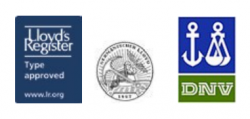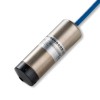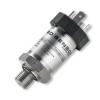 A guide to marine approval including explanations, applications and a choice of products certified for marine use.
A guide to marine approval including explanations, applications and a choice of products certified for marine use.
All voyage and safety critical equipment on a ship must be certified by the same marine approval body that audited and registered the whole ship.
A Marine Approved device is one that has been tested and certified by a recognised body such as LR (Lloyd’s Register), GL (Germanischer Lloyd), DNV (Det Norske Veritas), ABS (American Bureau of Shipping) and CCS (China Classification Society) for use on a ship.
The marine approval process involves an initial and continuous periodic product assessment to inspect random production samples, ensure adequate production and inspection processes, procedures, documentation and quality control, and review the current product design and any future design iterations for compliance with the type approval.
Pressure and level sensors that have been approved for marine use on ships and other offshore applications. Select a sensor for measuring sea water ballast, liquid cargo, fuel and wastewater pressures & levels.
 Marine Approved Liquid Level Sensors - Devices with marine approval certification to use on ships for measuring liquid level and converting it to an electrical signal to send to other instrumentation.
Marine Approved Liquid Level Sensors - Devices with marine approval certification to use on ships for measuring liquid level and converting it to an electrical signal to send to other instrumentation. Marine Approved Pressure Transmitters - Marine approved pressure transmitters certified for use on marine vessels to measure pressure as part of the ship management system.
Marine Approved Pressure Transmitters - Marine approved pressure transmitters certified for use on marine vessels to measure pressure as part of the ship management system.
